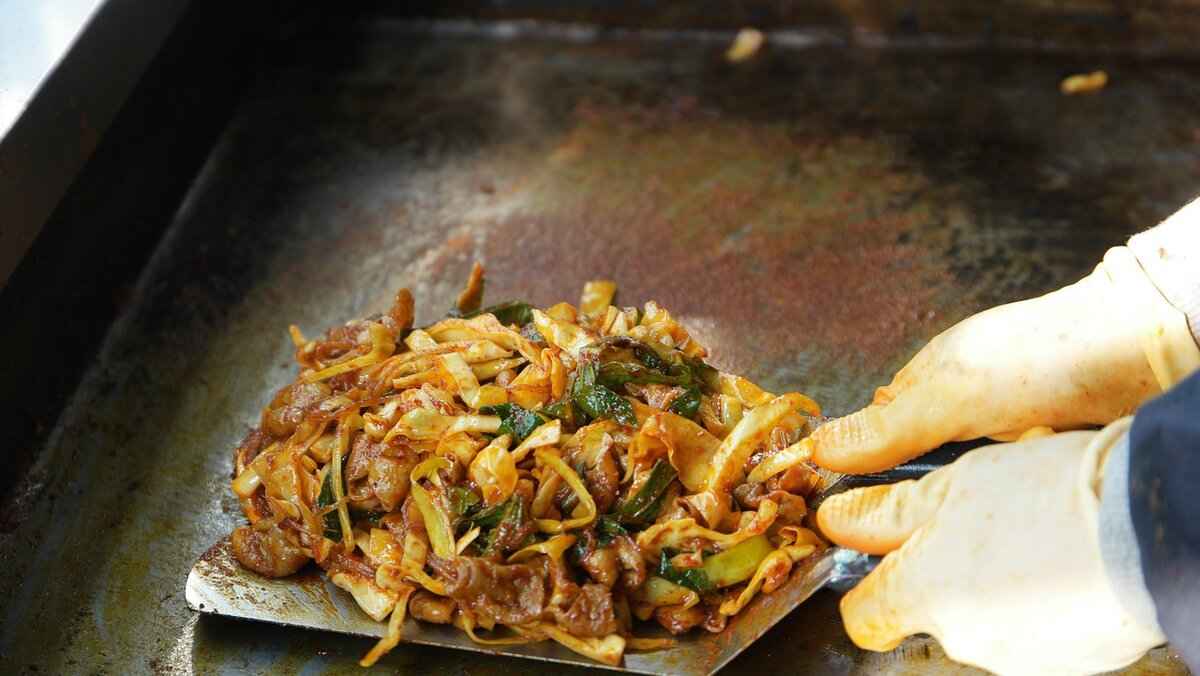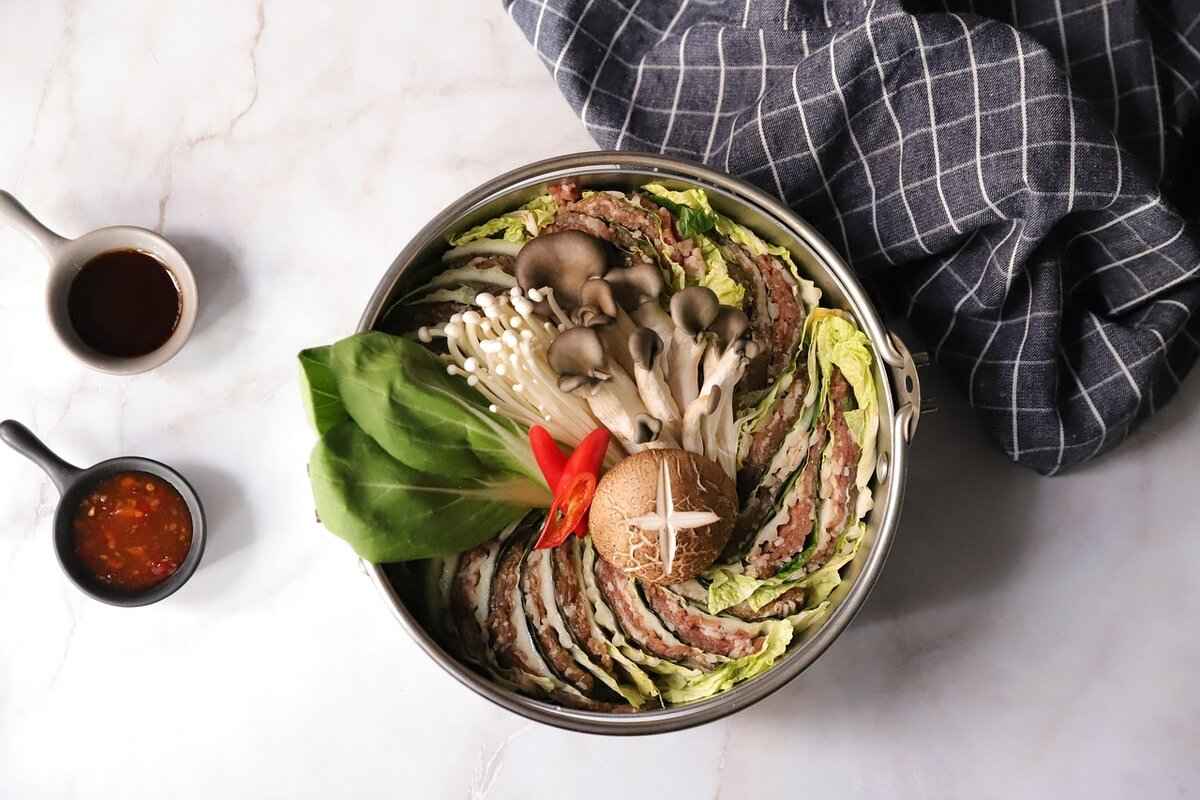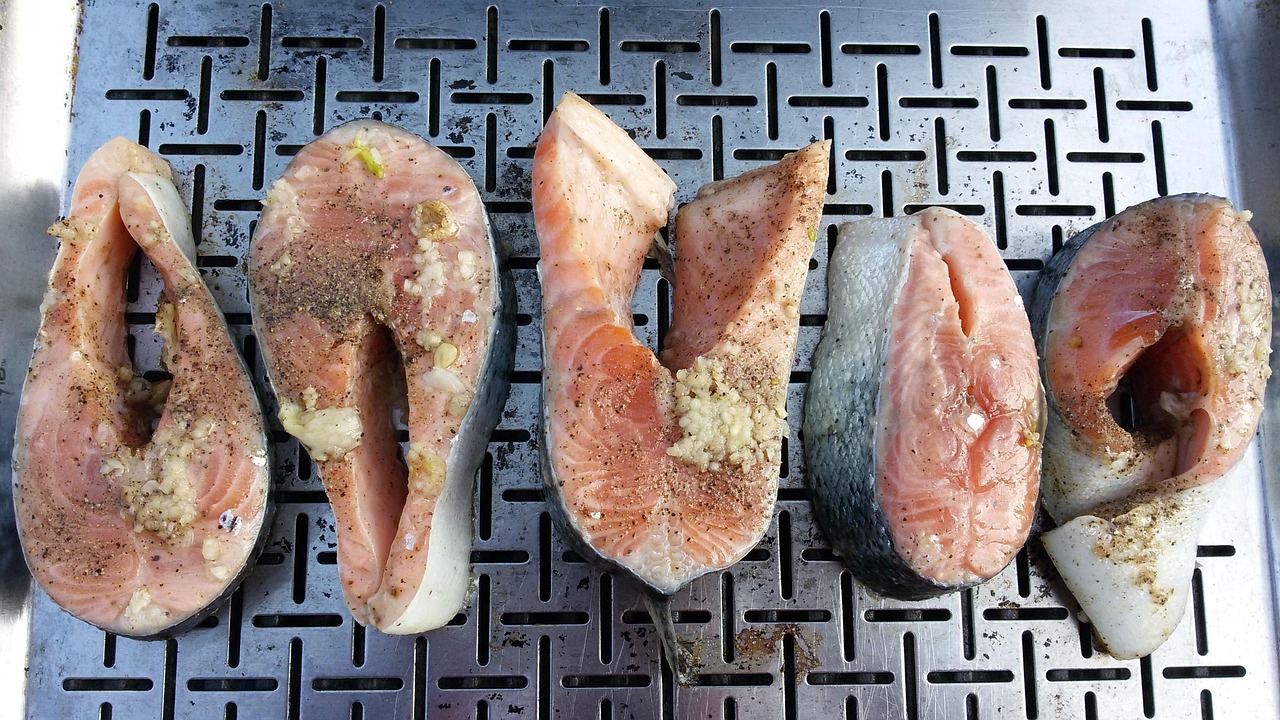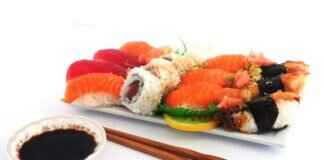Korean BBQ is not just a meal; it’s an experience that brings people together around the grill. This article delves into the intricacies of this beloved cuisine, offering insights on grilling techniques, essential ingredients, and tips to elevate your dining experience. Whether you’re a novice or a seasoned grill master, discover how to master this culinary delight!
Korean BBQ stands out due to its interactive dining experience, where diners grill their own food right at the table. This communal aspect fosters a sense of togetherness, making meals a social event. The cultural significance of Korean BBQ is deeply rooted in sharing and hospitality, allowing friends and family to bond over delicious food.
To achieve an authentic flavor, certain ingredients are indispensable. Key components include:
- Marinades: Essential for flavor infusion.
- Meats: Various cuts that define the barbecue experience.
- Side Dishes: Accompaniments that enhance the meal.
Among the most favored meats are:
- Bulogi: Marinated beef known for its tenderness.
- Galbi: Marinated short ribs packed with flavor.
- Samgyeopsal: Pork belly that is a favorite among many.
Marinades are crucial for flavor infusion. Traditional marinades include:
- Gochujang: A spicy red chili paste.
- Soy sauce-based recipes: For a savory touch.
Setting up an efficient grill is vital for a successful Korean BBQ. Follow these steps:
1. Choose the right grill type (gas, charcoal, or electric).2. Preheat your grill to the appropriate temperature.3. Maintain cleanliness for a delightful grilling experience.
Different grill types can affect the cooking process. Gas grills offer convenience, while charcoal grills provide a smoky flavor. Electric grills are great for indoor use.
Grilling meat to perfection requires technique. Here are some expert tips:
- Understand Cooking Times: Each type of meat has its ideal cooking time.
- Flipping and Basting: Best practices for enhancing flavor and moisture.
No Korean BBQ is complete without delicious side dishes known as banchan. Popular options include:
- Kimchi: A fermented vegetable dish that adds a spicy kick.
- Pickled Vegetables: For a refreshing contrast.
Making authentic kimchi involves simple ingredients and steps:
1. Combine napa cabbage, salt, and water.2. Add gochugaru, garlic, and ginger for flavor.3. Ferment for a few days before serving.
Avoiding common pitfalls can elevate your BBQ experience. Key mistakes include:
- Overcooking vs. Undercooking: Learn the right doneness for various meats.
- Neglecting Marinade Times: Allow meats to marinate adequately for maximum taste.
Understanding dining etiquette enhances your experience. Here are some tips:
- Dining Etiquette: Know the customs at a Korean BBQ restaurant.
- Hosting Tips: Practical advice for setting up and serving to impress your guests.

What Makes Korean BBQ Unique?
Korean BBQ is not just a meal; it is a celebration of community and culture. This unique dining experience invites diners to take part in the cooking process, creating a social atmosphere that enhances the enjoyment of food. But what exactly makes Korean BBQ stand out among other cuisines?
At the heart of Korean BBQ is the interactive grilling experience. Diners are provided with a grill at their table, allowing them to cook their own meats and vegetables. This hands-on approach fosters a sense of involvement and connection between friends and family, making every meal a shared event. The act of grilling together encourages conversation, laughter, and a deeper bond among diners.
Moreover, Korean BBQ is steeped in cultural significance. It is often enjoyed during special occasions, family gatherings, and celebrations. The communal aspect of sharing food resonates deeply in Korean culture, symbolizing unity and togetherness. As diners gather around the grill, they partake in a ritual that goes beyond mere sustenance; it is about creating memories and strengthening relationships.
Another distinctive feature of Korean BBQ is the variety of meats and side dishes that accompany the meal. From marinated beef (bulgogi) to grilled pork belly (samgyeopsal), each dish is prepared with care, utilizing traditional marinades that infuse the meats with rich flavors. Additionally, the meal is complemented by an array of banchan—small side dishes that include kimchi, pickled vegetables, and seasoned tofu. These sides not only enhance the meal but also reflect the diversity of Korean cuisine.
The experience of Korean BBQ is further enriched by the use of traditional sauces and dips, such as ssamjang (a thick, savory condiment) and sesame oil. These flavors add depth to the grilled meats, allowing diners to customize their meals to their preferences. The ability to create unique flavor combinations adds an element of creativity to the dining experience.
In addition to the flavors and communal aspects, Korean BBQ also emphasizes etiquette and tradition. Understanding the customs surrounding this dining experience enhances appreciation and enjoyment. For instance, it is customary to serve the eldest member of the group first, showcasing respect for family hierarchy. Furthermore, diners often take turns grilling for one another, reinforcing the sense of care and camaraderie.
To truly appreciate Korean BBQ, one must embrace its cultural roots and the communal spirit it embodies. The combination of interactive cooking, shared experiences, and delectable flavors makes it a unique culinary journey. Whether enjoyed at a restaurant or in the comfort of one’s home, Korean BBQ offers a delightful way to bond with loved ones over a shared passion for food.

Essential Ingredients for Authentic Korean BBQ
Korean BBQ is not just a meal; it’s an experience that engages the senses and brings people together. To truly savor this culinary delight, understanding the essential ingredients is crucial. In this section, we will explore the key components that create the authentic flavors of Korean BBQ, including marinades, meats, and side dishes.
To achieve an authentic flavor, certain ingredients are indispensable. Here, we delve into the key components that define Korean BBQ:
- Marinades: Marinades are the heart of Korean BBQ. They infuse meats with rich flavors and tenderize them for grilling. Traditional marinades often include ingredients like soy sauce, sesame oil, garlic, and ginger. A popular marinade is bulgogi sauce, which combines these elements with sugar and pear for a sweet and savory profile.
- Choice of Meats: The quality of meat plays a pivotal role in Korean BBQ. Common choices include:
- Bulgogi: Thinly sliced marinated beef, known for its tenderness and flavor.
- Galbi: Marinated short ribs that are rich and juicy, perfect for grilling.
- Samgyeopsal: Pork belly, often served unseasoned and grilled, allowing the natural flavors to shine.
- Chicken: Marinated or plain, chicken can be grilled to perfection with a crispy exterior.
- Side Dishes: No Korean BBQ is complete without a variety of banchan (side dishes). These small plates enhance the meal and provide contrasting flavors. Popular banchan include:
- Kimchi: Fermented vegetables, typically napa cabbage, seasoned with chili pepper, garlic, and ginger.
- Pajeon: A savory pancake filled with green onions and seafood.
- Pickled Vegetables: These add a refreshing crunch and balance the richness of the grilled meats.
Marinades are crucial for flavor infusion and tenderness. The right marinade not only enhances the taste but also helps to break down the meat fibers, resulting in a more enjoyable texture. For instance, a well-prepared gochujang (Korean chili paste) marinade can add a delightful kick to your meats, making the grilling experience even more exciting.
When selecting meats for Korean BBQ, consider the following:
- Quality: Always choose high-quality cuts. Look for marbling in beef, which indicates tenderness and flavor.
- Preparation: Properly slice the meat against the grain to ensure tenderness.
- Marination Time: Allow meats to marinate for at least 30 minutes, or overnight for deeper flavor absorption.
Side dishes not only complement the grilled meats but also provide a balance of flavors. Here are some essential banchan:
- Kimchi: A staple in every Korean meal, its spicy and tangy flavor pairs perfectly with grilled meats.
- Seasoned Spinach: A simple yet flavorful side, seasoned with sesame oil and garlic.
- Tofu: Often grilled or served cold, tofu adds a protein-rich option to the table.
In conclusion, understanding these essential ingredients and their roles in Korean BBQ can elevate your grilling experience. By focusing on quality meats, flavorful marinades, and delicious side dishes, you can create an authentic and memorable meal that captures the spirit of Korean cuisine.
Popular Meats Used in Korean BBQ
Korean BBQ is a culinary experience that has captivated food enthusiasts worldwide, and one of the key elements that make it so delightful is the variety of meats used. Each cut offers unique flavors and textures, contributing to the overall experience. In this section, we will explore some of the , including bulgogi, galbi, and other options that elevate your grilling game.
Bulogi, a classic dish in Korean cuisine, consists of thinly sliced marinated beef, typically sirloin or tenderloin. The marinade, which often includes soy sauce, sesame oil, garlic, and sugar, infuses the meat with a delightful sweetness and umami flavor. The preparation involves:
- Marinating: The meat should be marinated for at least 30 minutes, but for best results, allow it to sit overnight.
- Grilling: Grill the marinated beef over high heat for a few minutes on each side until cooked through, ensuring it remains tender and juicy.
Galbi, or Korean short ribs, are another staple of Korean BBQ. These ribs are marinated in a mixture similar to that of bulogi, but often include additional ingredients like pear or apple for a fruity twist. The preparation process includes:
- Marinating: The ribs should be marinated for several hours or overnight to allow the flavors to penetrate deeply.
- Grilling: Cook the ribs on a grill, turning occasionally, until they are caramelized and tender, which typically takes about 10-15 minutes.
In addition to beef, pork and chicken are popular choices for Korean BBQ. Samgyeopsal, or pork belly, is particularly loved for its rich flavor and satisfying texture. It is usually grilled without marinade, allowing the natural taste of the meat to shine. Here’s how to prepare it:
- Grilling: Slice the pork belly into thick pieces and grill on high heat until crispy and golden.
- Serving: Serve with dipping sauces like ssamjang and fresh vegetables for wrapping.
Chicken is another versatile option, often marinated in a mixture of soy sauce, ginger, and garlic. The preparation process involves:
- Marinating: Marinate the chicken for at least 1 hour to enhance its flavor.
- Grilling: Grill the chicken pieces until they are fully cooked, ensuring they remain juicy and flavorful.
Choosing a variety of meats not only enhances the flavor profile of your Korean BBQ but also caters to different preferences among diners. Each type of meat brings its own unique taste and texture, creating a well-rounded meal that everyone can enjoy. Whether you prefer the sweetness of bulogi, the richness of galbi, or the savory delight of samgyeopsal, there’s something for everyone at a Korean BBQ.
As you explore the delicious world of Korean BBQ, remember that the key to a successful grilling experience lies in the quality of the meat and the marinades used. Experiment with different cuts and flavors to find your perfect combination!
Beef Cuts: Bulogi and Galbi
Korean BBQ is a culinary experience that transcends mere dining; it is a celebration of flavors, textures, and communal enjoyment. Among the myriad of meats that grace the grill, bulogi and galbi stand out as two of the most cherished staples. These marinated cuts of beef not only embody the essence of Korean flavors but also offer a delightful cooking and eating experience.
Bulgogi, which translates to “fire meat,” is thinly sliced marinated beef that is grilled or stir-fried. The marinade typically consists of soy sauce, sesame oil, garlic, and sugar, providing a perfect balance of sweet and savory flavors. To prepare bulgogi for grilling, it’s essential to choose the right cut of beef, such as ribeye or sirloin, as these cuts are tender and flavorful.
- Combine soy sauce, brown sugar, garlic, and sesame oil in a bowl.
- Slice the beef thinly against the grain for optimal tenderness.
- Marinate the beef for at least 30 minutes, but preferably overnight in the refrigerator for deeper flavor.
Galbi, or Korean short ribs, is another beloved dish in Korean BBQ. This cut is typically marinated in a mixture that includes soy sauce, pear, garlic, and sesame oil, which not only tenderizes the meat but also infuses it with a rich sweetness. The marination process is crucial for galbi as it enhances the natural flavors of the beef.
- Use flanken-cut short ribs for a more traditional presentation.
- Marinate the ribs for at least 2 hours, allowing the flavors to penetrate deeply.
- Grill over medium-high heat, ensuring that you don’t overcook the meat to retain its juiciness.
When it comes to grilling, timing and temperature are key. For bulgogi, grill the marinated beef for about 2-3 minutes on each side, ensuring it remains tender and juicy. On the other hand, galbi requires a bit more attention; grill for around 4-5 minutes per side, depending on thickness, while keeping an eye on flare-ups from the fat.
Pairing bulgogi and galbi with traditional side dishes, or banchan, such as kimchi and pickled vegetables, can elevate your meal. These sides not only provide a refreshing contrast to the rich flavors of the grilled meats but also enhance the overall dining experience.
In conclusion, mastering the preparation of bulgogi and galbi is essential for any Korean BBQ enthusiast. With the right cuts of beef, flavorful marinades, and proper grilling techniques, you can create a delicious and authentic Korean BBQ experience that will impress your family and friends.
Pork and Chicken Options
Pork belly, known as samgyeopsal in Korean, is a staple in Korean BBQ and is cherished for its rich flavor and tender texture. This cut of meat is typically grilled at the table, allowing diners to enjoy the experience of cooking their food to perfection. The beauty of samgyeopsal lies in its simplicity; it is often served without heavy marinades, allowing the natural flavors of the pork to shine through. However, to elevate your BBQ experience, there are several marinating techniques you can explore.
When preparing samgyeopsal, consider a light marinade that enhances its flavor without overpowering it. A mixture of soy sauce, sesame oil, and minced garlic can add a delightful depth. Allow the pork to marinate for at least 30 minutes before grilling, ensuring the flavors penetrate the meat. Additionally, pairing grilled pork belly with ssamjang (a thick, savory dipping sauce) and fresh greens creates a perfect balance of flavors and textures.
Chicken is another fantastic option for your Korean BBQ spread. Its versatility allows for various marinades and cooking styles. Popular choices include chicken thighs and wings, which are known for their juiciness and flavor. A traditional marinade for chicken often includes gochujang (Korean chili paste), soy sauce, honey, and a splash of rice wine. This combination not only tenderizes the meat but also imparts a sweet and spicy flavor that is irresistible.
To marinate chicken effectively, it is recommended to let it sit for at least an hour, though overnight marination will yield even better results. When grilling, ensure that the chicken is cooked thoroughly, reaching an internal temperature of 165°F (75°C) for safety. The grilling process allows the sugars in the marinade to caramelize, creating a beautiful glaze that enhances the overall taste.
Both pork belly and chicken can be complemented with a variety of side dishes, known as banchan, which are essential to a complete Korean BBQ meal. Fresh vegetables, pickled radishes, and kimchi not only add flavor but also provide a refreshing contrast to the richness of the grilled meats.
In summary, whether you choose to grill samgyeopsal or marinated chicken, the key to a successful BBQ lies in the marinating techniques and the quality of the ingredients used. Experimenting with different marinades and cooking methods will allow you to discover your personal favorites, making your Korean BBQ experience truly memorable.
Essential Marinades and Sauces
When it comes to Korean BBQ, marinades play a pivotal role in enhancing the flavor and tenderness of the meats. These mixtures not only infuse the proteins with rich tastes but also create a delightful aroma that elevates the entire grilling experience. This section delves into some of the most popular traditional marinades, including those based on gochujang and soy sauce, which are essential for achieving authentic Korean flavors.
- Gochujang Marinade: This spicy and savory paste made from fermented red chili pepper is a staple in Korean cuisine. To create a gochujang marinade, combine:
- 3 tablespoons gochujang
- 2 tablespoons soy sauce
- 1 tablespoon sesame oil
- 1 tablespoon honey or sugar
- 2 cloves minced garlic
- 1 teaspoon grated ginger
- Mix all the ingredients until smooth, then marinate your choice of meat for at least 30 minutes. This marinade is particularly great for beef and pork.
- Soy Sauce Marinade: A classic choice, soy sauce adds depth and umami to the meat. For a simple soy sauce marinade, mix:
- 1/4 cup soy sauce
- 2 tablespoons brown sugar
- 2 tablespoons rice vinegar
- 1 tablespoon sesame oil
- 2 cloves minced garlic
- 1 teaspoon black pepper
- Allow the meat to marinate for at least an hour, or overnight for a more intense flavor. This marinade works exceptionally well with chicken and beef.
In addition to these traditional marinades, there are variations that incorporate different ingredients for unique flavor profiles. For example, adding pear or apple puree can tenderize the meat while infusing a subtle sweetness. Similarly, incorporating chili flakes or sesame seeds can enhance the texture and flavor complexity.
It’s also important to consider the marinating time. While some meats benefit from a quick soak, others require longer periods to fully absorb the flavors. As a general guideline:
| Type of Meat | Recommended Marinade Time |
|---|---|
| Beef (bulgogi) | 1 to 3 hours |
| Pork (samgyeopsal) | 30 minutes to 2 hours |
| Chicken | 1 to 4 hours |
By understanding the basics of these marinades, you can significantly enhance the flavor of your Korean BBQ dishes. Experimenting with different ingredients and marinating times will allow you to discover your perfect blend, ensuring that each grilling session is a memorable culinary experience.

How to Set Up Your Korean BBQ Grill
Setting up an efficient grill is vital for a successful Korean BBQ. Proper preparation not only enhances the cooking experience but also ensures that the flavors of the ingredients shine through. In this section, we will provide step-by-step instructions on how to prepare your grill for optimal cooking.
Before you begin, it’s essential to select the right grill type that suits your needs. Here are the popular options:
- Gas Grills: Convenient and easy to control, gas grills allow for quick heating and precise temperature management.
- Charcoal Grills: For those who prefer a smoky flavor, charcoal grills offer a traditional grilling experience, although they require more time to heat up.
- Electric Grills: Ideal for indoor use, electric grills are user-friendly and provide consistent heat without the hassle of charcoal or gas.
Once you’ve chosen your grill, follow these key steps to prepare it:
- Clean the Grill: Start by cleaning the grates with a grill brush to remove any residue from previous use. This ensures that your food does not stick and helps maintain flavor integrity.
- Preheat the Grill: Turn on your grill and allow it to preheat for about 10-15 minutes. This will ensure that the grilling surface reaches the desired temperature for cooking.
- Manage Heat Levels: Adjust the burners or vents to achieve the right heat level. For Korean BBQ, a medium-high heat is typically ideal for grilling meats quickly while achieving a nice sear.
- Set Up for Safety: Ensure that your grill is placed on a stable, non-flammable surface, away from any flammable materials or structures.
To enhance your grilling experience, consider using the following accessories:
- Grill Mats: These can help prevent smaller items from falling through the grates and make cleanup easier.
- Meat Thermometer: To ensure your meats are cooked to perfection, a meat thermometer can help you monitor internal temperatures accurately.
- Grilling Tools: Use long-handled tongs and spatulas to safely turn and serve your grilled items without burning yourself.
During the grilling process, it’s important to maintain cleanliness:
- Keep a Spray Bottle Handy: Fill a spray bottle with water to manage flare-ups by lightly misting the flames.
- Wipe Down Grates: After grilling each batch, use a paper towel or cloth to wipe down the grates to prevent build-up.
Once your grill is set up and ready, you can proceed to marinate your meats and prepare your side dishes. Remember, the key to a successful Korean BBQ lies not just in the grilling but also in the experience of sharing delicious food with friends and family. Enjoy the process, and happy grilling!
Choosing the Right Grill Type
is crucial for achieving the best results in Korean BBQ. Each grill type has its distinct characteristics that can significantly influence the cooking process and the flavor of the food. Here, we will explore the pros and cons of gas, charcoal, and electric grills, helping you make an informed decision for your next BBQ.
| Grill Type | Pros | Cons |
|---|---|---|
| Gas Grills |
|
|
| Charcoal Grills |
|
|
| Electric Grills |
|
|
When selecting the right grill type for your Korean BBQ, consider your cooking style and preferences. Gas grills are perfect for those who prioritize convenience and quick cooking, while charcoal grills are ideal for purists seeking that authentic smoky flavor. Electric grills are a great option for those with limited outdoor space or who prefer indoor cooking.
Ultimately, the best grill for your Korean BBQ experience will depend on your specific needs and the atmosphere you wish to create. Whether you choose gas, charcoal, or electric, understanding the strengths and weaknesses of each type will help you elevate your grilling skills and enjoy delicious Korean BBQ to the fullest!
Preparing Your Grill for Cooking
When it comes to grilling, especially for Korean BBQ, proper grill preparation is essential for achieving that perfect sear and flavor. This process not only ensures even cooking but also enhances the overall dining experience. Below are key steps to effectively prepare your grill.
Grill preparation is crucial for several reasons:
- Even Cooking: A well-prepared grill distributes heat evenly across the cooking surface, preventing hot spots that can lead to unevenly cooked food.
- Safety: Proper cleaning and maintenance of your grill reduce the risk of flare-ups and cross-contamination.
- Flavor Enhancement: A clean grill allows the natural flavors of the meat to shine through without interference from leftover residues.
Follow these steps to ensure your grill is ready for cooking:
- Clean the Grill Grates: Start by removing any debris from previous grilling sessions. Use a grill brush to scrub the grates thoroughly.
- Check Fuel Levels: If using a gas grill, ensure you have enough propane. For charcoal, have sufficient briquettes ready.
- Preheat the Grill: Turn on your grill and set it to high heat. Allow it to preheat for about 10-15 minutes. This step is vital for achieving a good sear on your meats.
Understanding how to control heat levels is key to successful grilling:
- Direct Heat: Ideal for quick-cooking items like thinly sliced meats.
- Indirect Heat: Best for thicker cuts that require longer cooking times. This method helps prevent burning while ensuring the meat cooks through.
Keeping your grill clean is essential not just for safety but also for flavor. Here are some tips:
- Regular Cleaning: After each use, clean the grates while they are still warm. This makes it easier to remove stuck-on food.
- Deep Cleaning: Schedule a deep clean at least once a season. This involves removing the grates and cleaning the interior components of the grill.
- Use Natural Cleaners: Opt for natural cleaning solutions like vinegar and baking soda to avoid chemical residues affecting your food.
Investing time in proper grill preparation will not only enhance the cooking process but also improve the taste of your Korean BBQ. By following these steps, you ensure a more enjoyable and flavorful grilling experience for you and your guests. Remember, a well-prepared grill is the foundation of a successful BBQ!

Tips for Perfectly Grilling Your Meat
Grilling meat to perfection is an art that combines technique, timing, and a keen understanding of temperature control. Whether you’re a novice or a seasoned grill master, mastering these skills can elevate your Korean BBQ experience to new heights. Below are essential tips that will help you achieve the best results when grilling your favorite meats.
Each type of meat has its own ideal cooking time. For example:
| Meat Type | Recommended Cooking Time | Ideal Internal Temperature |
|---|---|---|
| Beef (bulgogi) | 2-3 minutes per side | Medium rare: 130-135°F |
| Pork (samgyeopsal) | 3-4 minutes per side | 145°F |
| Chicken | 5-7 minutes per side | 165°F |
These times are general guidelines and can vary based on the thickness of the cuts and the heat of your grill. Always use a meat thermometer to ensure the meat is cooked to the correct temperature.
Flipping your meat at the right time is crucial for achieving even cooking and maximizing flavor. Here are some tips:
- Flip Sparingly: Avoid flipping your meat too often. Let it sear for a few minutes before turning it over. This helps develop a delicious crust.
- Basting: Use a marinade or sauce to baste your meat while it cooks. This not only adds flavor but also helps keep the meat moist.
- Resting Time: After grilling, let your meat rest for a few minutes before slicing. This allows the juices to redistribute, ensuring a juicy bite.
Maintaining the right temperature on your grill is essential for perfect grilling. Here are some strategies:
- Preheat Your Grill: Always preheat your grill for at least 10-15 minutes before cooking. This ensures a consistent cooking surface.
- Two-Zone Cooking: Create two zones on your grill: one for direct heat and one for indirect heat. This allows you to sear meat quickly and then move it to a cooler area to finish cooking.
- Monitor Heat Levels: Use a grill thermometer to keep an eye on the temperature. Adjust the vents on your charcoal grill or the burners on your gas grill as needed.
Even experienced grillers can make mistakes that lead to less-than-perfect results. Here are some common pitfalls to avoid:
- Overcrowding the Grill: Avoid placing too much meat on the grill at once, as this can lower the temperature and lead to uneven cooking.
- Skipping the Marinade: Don’t underestimate the power of a good marinade. Allowing your meat to marinate not only enhances flavor but also tenderizes it.
- Neglecting Cleanliness: Always clean your grill grates before cooking. This prevents sticking and ensures a better flavor.
By following these expert tips on timing, temperature control, and flipping, you can achieve perfectly grilled meat that will impress your guests and elevate your Korean BBQ experience. Happy grilling!
Understanding Cooking Times for Different Meats
When it comes to grilling, understanding the ideal cooking times for different types of meat is essential for achieving optimal flavor and texture. Each cut has its unique characteristics that dictate how long it should be cooked to reach the desired level of doneness. In this guide, we will explore the recommended cooking times for various meats used in Korean BBQ, ensuring that your grilling experience is both delicious and satisfying.
Beef is a popular choice in Korean BBQ, and different cuts require different cooking times:
- Bulgogi (marinated beef): Grill for about 2-3 minutes per side for medium-rare.
- Galbi (marinated short ribs): Grill for approximately 4-5 minutes per side, depending on thickness.
- Brisket: Cook for about 5-7 minutes per side, ensuring a nice sear while keeping it juicy.
Pork belly, or samgyeopsal, is a staple in Korean BBQ and requires careful attention:
- Pork Belly: Grill for around 3-4 minutes per side until crispy and golden.
- Pork Shoulder: Cook for about 6-8 minutes per side for tenderness.
Chicken is another versatile option that pairs well with various marinades:
- Chicken Thighs: Grill for 5-7 minutes per side, ensuring they are cooked through but still juicy.
- Chicken Breasts: Cook for about 6-8 minutes per side, depending on thickness.
Seafood is a quick-cooking option that adds variety to your BBQ:
- Salmon Fillets: Grill for about 4-5 minutes per side until flaky.
- Shrimp: Cook for approximately 2-3 minutes on each side, just until they turn pink.
To ensure that your meats are cooked perfectly:
- Use a meat thermometer to check internal temperatures: 145°F for pork and chicken, and 130-135°F for beef.
- Let the meat rest for a few minutes after grilling to allow juices to redistribute.
- Consider the thickness of the cuts when determining cooking times; thicker pieces may require longer cooking times.
By understanding the ideal cooking times for different meats, you can elevate your Korean BBQ experience and impress your guests with perfectly grilled dishes. Remember, practice makes perfect, so don’t hesitate to experiment with different cuts and cooking techniques!
Flipping and Basting Techniques
When it comes to grilling meats, particularly in the context of Korean BBQ, mastering the art of flipping and basting is essential for achieving the perfect flavor and texture. These techniques not only enhance the overall taste but also play a crucial role in preventing your meats from drying out during the grilling process.
Flipping your meats at the right intervals ensures even cooking and helps to lock in moisture. When you flip your meats, you allow both sides to receive direct heat, which promotes a well-cooked exterior while keeping the inside juicy. Timing is crucial; flipping too early can lead to sticking, while waiting too long can cause the meat to overcook.
- Use Tongs: Always use tongs instead of a fork to flip your meat. This prevents piercing the meat, which can release juices and lead to dryness.
- Wait for the Right Moment: Look for visual cues such as a change in color and the meat pulling away from the grill grates before flipping.
- Rotate for Grill Marks: For aesthetic appeal, rotate your meat 90 degrees halfway through cooking on each side to achieve those coveted grill marks.
Basting involves applying a flavorful liquid, such as a marinade or sauce, to your meats while they cook. This technique adds moisture and enhances flavor. Here are some tips for effective basting:
- Timing is Key: Begin basting during the last few minutes of cooking. This prevents the sugars in the sauce from burning.
- Use a Brush: A basting brush allows for even application without soaking the meat too heavily.
- Choose the Right Mixture: Use a combination of your marinade and a bit of oil to create a flavorful basting sauce that complements your meat.
Implementing these techniques can significantly improve your grilling results:
- Enhanced Flavor: Basting infuses your meats with additional flavor, making each bite more enjoyable.
- Moisture Retention: Both flipping and basting help maintain moisture, ensuring that your meats are tender and juicy.
- Visual Appeal: Properly grilled and basted meats not only taste great but also look delicious on the plate.
Incorporating effective flipping and basting techniques into your grilling routine can elevate your Korean BBQ experience. By following these best practices, you can ensure that your meats are flavorful, moist, and visually appealing, making your BBQ gatherings a memorable culinary delight.

Side Dishes to Complement Your Korean BBQ
No Korean BBQ is complete without a variety of delicious side dishes. Known as banchan, these small plates not only enhance the meal but also contribute to the overall dining experience. In this section, we will explore the essential banchan that you should consider serving with your Korean BBQ.
Banchan refers to a variety of small side dishes served along with cooked rice in Korean cuisine. These dishes are integral to the meal, providing contrasting flavors and textures that complement the main grilled items. They are typically served in small portions and can vary widely from region to region.
- Kimchi: This iconic fermented vegetable dish, often made from napa cabbage and radishes, is a staple in Korean cuisine. Its spicy and tangy flavor profile perfectly balances the richness of grilled meats.
- Pickled Vegetables: Various pickled vegetables, such as cucumbers and carrots, add a refreshing crunch and acidity that cuts through the fatty flavors of the BBQ.
- Seasoned Spinach (Sigeumchi Namul): Lightly seasoned with sesame oil, garlic, and soy sauce, this dish adds a nutritious and flavorful element to your meal.
- Tofu Salad: A cold tofu salad dressed with soy sauce and sesame oil offers a creamy texture that contrasts beautifully with grilled meat.
Making authentic kimchi at home is easier than you might think. Here’s a simple recipe:
Ingredients:- 1 large napa cabbage- 1 cup sea salt- 4 cups water- 1 tablespoon grated ginger- 1 tablespoon minced garlic- 2 tablespoons Korean red pepper flakes (gochugaru)- 1 tablespoon fish sauce- 2 green onions, choppedInstructions:1. Dissolve salt in water and soak the cabbage for 2 hours.2. Rinse the cabbage and drain.3. Mix ginger, garlic, gochugaru, fish sauce, and green onions to create the paste.4. Rub the paste onto the cabbage leaves.5. Pack the cabbage into a jar and let it ferment at room temperature for 1-2 days, then refrigerate.
In addition to kimchi, there are numerous other banchan options to consider:
- Radish Salad: A refreshing side made with julienned radishes, sesame seeds, and a light dressing.
- Egg Custard (Gyeran-jjim): A fluffy steamed egg dish that adds a comforting element to your meal.
- Spicy Cucumber Salad: Cucumbers tossed in a spicy dressing create a zesty contrast to the grilled meats.
When planning your Korean BBQ, remember that these side dishes are not just an afterthought; they are an integral part of the meal that enhances the overall experience. The variety of flavors and textures provided by banchan can elevate your BBQ to new heights, making it a memorable dining occasion.
Popular Banchan to Serve
Korean BBQ is not just about the grilled meats; it’s also about the delightful array of banchan that accompany the meal. Banchan are small side dishes served along with the main course, and they play a crucial role in enhancing the overall dining experience. These flavorful additions provide a balance to the rich, savory flavors of grilled meats, making your BBQ feast both satisfying and memorable.
Banchan refers to a variety of side dishes in Korean cuisine, typically served in small portions. They can range from pickled vegetables to savory pancakes, and they are often enjoyed throughout the meal. The purpose of banchan is to provide different textures and flavors, ensuring that each bite is a delightful surprise.
- Kimchi: This iconic fermented vegetable dish is a staple in Korean meals. Made primarily from napa cabbage and radishes, kimchi is seasoned with chili pepper, garlic, and ginger, offering a spicy and tangy kick that complements grilled meats beautifully.
- Seasoned Vegetables: Commonly known as namul, these are vegetables lightly seasoned with sesame oil, garlic, and soy sauce. Options include spinach, bean sprouts, and zucchini, providing a fresh and healthy contrast to the rich flavors of BBQ.
- Tofu Dishes: Tofu can be prepared in various ways, such as stir-fried or marinated. It absorbs flavors well and adds a protein-rich option for those who prefer a lighter side.
- Pickled Radish: Known as danmuji, this bright yellow pickled radish is a refreshing palate cleanser, often served alongside BBQ to balance the richness of the meats.
- Potato Salad: Korean-style potato salad is creamier and sweeter than its Western counterpart, often incorporating apples and carrots. It adds a comforting element to the meal.
- Pancakes: Savory pancakes, or jeon, made with various ingredients like green onions, seafood, or kimchi, provide a crispy texture and are perfect for dipping in soy sauce.
Preparing banchan at home can be a fun and rewarding experience. Here are some simple recipes to get you started:
Simple Kimchi Recipe:- Ingredients: Napa cabbage, Korean chili powder, garlic, ginger, fish sauce, sugar.- Steps: 1. Cut the cabbage and salt it to draw out moisture. 2. Mix the seasoning paste and coat the cabbage. 3. Pack it into a jar and let it ferment for a few days.
Seasoned Spinach (Sigeumchi Namul):- Ingredients: Fresh spinach, sesame oil, garlic, soy sauce, sesame seeds.- Steps:1. Blanch spinach in boiling water, then cool in ice water.2. Squeeze out excess water and mix with seasonings.3. Top with sesame seeds before serving.
Banchan are essential not only for their flavors but also for their cultural significance. They embody the Korean philosophy of balance in meals, where a variety of tastes and nutrients are represented. Serving banchan allows for a communal dining experience, encouraging sharing and conversation among guests.
In conclusion, banchan enriches the Korean BBQ experience, offering a delightful array of flavors and textures that elevate the meal. By incorporating these side dishes, you can create a well-rounded dining experience that celebrates the essence of Korean cuisine.
How to Prepare Kimchi at Home
Kimchi is more than just a side dish; it is a fundamental component of Korean cuisine, celebrated for its unique flavors and health benefits. This traditional fermented vegetable dish is often served with grilled meats, enhancing the overall dining experience. Making kimchi at home is not only rewarding but also allows you to customize the flavors to your liking. Here’s a simple yet authentic recipe to help you create your own kimchi.
To prepare kimchi, you’ll need the following ingredients:
- 1 medium napa cabbage
- 1/2 cup sea salt
- 4 cups water
- 1 tablespoon grated ginger
- 5 cloves garlic, minced
- 1 tablespoon sugar
- 1/4 cup fish sauce
- 1/2 cup gochugaru (Korean red pepper flakes)
- 1 medium carrot, julienned
- 4 green onions, chopped
Follow these steps to create your delicious homemade kimchi:
- Prepare the Cabbage: Cut the napa cabbage into quarters and remove the core. Chop it into bite-sized pieces. In a large bowl, dissolve the sea salt in water and soak the cabbage for about 2 hours, tossing occasionally.
- Make the Kimchi Paste: In a separate bowl, combine the grated ginger, minced garlic, sugar, fish sauce, and gochugaru. Mix until you form a thick paste.
- Combine Ingredients: After the cabbage has soaked, rinse it thoroughly under cold water to remove excess salt. Drain well and place it in a large mixing bowl. Add the kimchi paste, julienned carrots, and chopped green onions. Mix everything together, using your hands (wear gloves to protect your skin from the spice).
- Pack the Kimchi: Transfer the mixture into a clean, airtight container, pressing down to eliminate air pockets. Leave some space at the top as the kimchi will expand during fermentation.
- Ferment: Leave the container at room temperature for 1-2 days, depending on the desired level of fermentation. After that, store it in the refrigerator. Kimchi can be enjoyed fresh or after a few weeks as it develops more complex flavors.
Kimchi is not only a flavorful addition to meals but also packed with nutritional benefits. It is rich in vitamins A, B, and C, and contains probiotics that promote gut health. The fermentation process enhances its nutritional profile, making it a healthy choice for any meal.
Enjoy your homemade kimchi with grilled meats, rice, or as a flavorful ingredient in various dishes. By following this simple recipe, you can bring the authentic taste of Korean cuisine right into your kitchen!

Common Mistakes to Avoid When Grilling Korean BBQ
Grilling Korean BBQ is an art that requires attention to detail and a deep understanding of the process. While the experience can be incredibly rewarding, there are several common mistakes that can detract from your BBQ experience. This section will delve into these pitfalls and provide practical advice on how to avoid them, ensuring your grilling session is a resounding success.
- Overcooking Your Meats
- Undercooking
- Neglecting Marinade Times
- Using Too Much Heat
- Not Preheating the Grill
- Skipping the Resting Period
One of the most prevalent mistakes is overcooking the meats. Each type of meat has a specific ideal cooking time. For instance, bulgogi should be grilled quickly over high heat to maintain its tenderness, while galbi can handle a bit more time. Use a meat thermometer to check the internal temperature; for beef, aim for around 130°F for medium-rare.
Conversely, undercooking can lead to food safety issues. Always ensure that poultry and pork reach safe temperatures: 165°F for chicken and 145°F for pork. Invest in a reliable meat thermometer to help you achieve the perfect doneness without guesswork.
Marinades are essential for flavor, but many people underestimate the importance of marinating times. Allowing meat to marinate for at least 30 minutes enhances its flavor significantly. For optimal results, marinate overnight when possible, especially for tougher cuts like pork belly.
While high heat is essential for achieving a good sear, excessive heat can lead to burnt meat. Control your grill’s temperature by adjusting the flames or using a two-zone setup, where one side is hotter for searing and the other cooler for cooking through.
Jumping straight into grilling without preheating can cause sticking and uneven cooking. Make sure to preheat your grill for at least 10-15 minutes before placing the meat on it. This step is crucial for achieving those beautiful grill marks and ensuring a proper sear.
After grilling, it’s tempting to dive right in, but skipping the resting period can result in dry meat. Allow your grilled meats to rest for about 5-10 minutes before slicing. This helps retain juices and enhances the overall flavor.
By avoiding these common mistakes, you can significantly enhance your Korean BBQ experience. Remember, grilling is not just about cooking; it’s about enjoying the process and sharing delicious food with friends and family. Take your time, pay attention to details, and most importantly, have fun!
With the right techniques and a little practice, you’ll be well on your way to grilling like a pro. Embrace the flavors of Korean BBQ and impress your guests with perfectly cooked meats and vibrant side dishes.
Overcooking vs. Undercooking
Grilling meat is an art that requires a delicate balance between overcooking and undercooking. Understanding this balance is crucial for achieving the perfect meal, especially in Korean BBQ where the flavors and textures of the meat play a significant role in the overall dining experience. This section will guide you through the nuances of determining the right doneness for various meats, ensuring that your culinary efforts are rewarded with delicious results.
The doneness of meat affects not only its taste but also its texture and juiciness. Overcooked meat can become tough and dry, while undercooked meat may pose health risks and lack flavor. Therefore, it’s essential to learn how to identify the ideal doneness for each type of meat.
- Beef: For cuts like bulgogi and galbi, aim for a medium-rare to medium doneness. A meat thermometer should read 130°F to 145°F. The meat should be tender and juicy, with a warm red center.
- Pork: Pork should be cooked to an internal temperature of 145°F. It should be slightly pink in the center but not raw. The juices should run clear, and the meat should be tender.
- Chicken: Chicken must be cooked thoroughly to an internal temperature of 165°F to ensure safety. The meat should be white with no pink, and the juices should run clear.
Mastering the grill involves more than just cooking time; it requires technique. Here are some tips to help you achieve the perfect doneness:
- Use a Meat Thermometer: This tool is invaluable for checking the internal temperature of your meat. It helps prevent both overcooking and undercooking.
- Know Your Grill: Different grills distribute heat differently. Familiarize yourself with your grill’s hot spots and adjust your cooking strategy accordingly.
- Resting Time: Allow your meat to rest after grilling. This lets the juices redistribute, resulting in a more flavorful and tender bite.
- Ignoring Carryover Cooking: Remember that meat continues to cook even after being removed from the grill. Factor this into your timing.
- Not Monitoring Heat Levels: Fluctuating grill temperatures can lead to inconsistent doneness. Maintain a steady heat for better results.
- Skipping Marinades: Marinades not only add flavor but can also affect the cooking process. A well-marinated piece of meat can cook more evenly.
By understanding the balance between overcooking and undercooking, you can elevate your Korean BBQ experience. Knowing how to identify the right doneness for various meats will ensure that each bite is tender, juicy, and full of flavor. With practice and attention to detail, you can become a master griller, impressing your guests with perfectly cooked dishes every time.
Neglecting Marinade Times
When it comes to Korean BBQ, the marinade times are crucial for achieving optimal flavor. Many home cooks underestimate the importance of allowing meats to marinate adequately, which can lead to a disappointing grilling experience. This section will delve into why proper marination is essential and how it can transform your BBQ dishes.
What Are Marinades and Their Purpose?
Marinades are mixtures typically composed of acidic ingredients (like vinegar or citrus juice), oils, and various seasonings. Their primary purpose is to infuse flavor into the meat while also tenderizing it. The acid in marinades breaks down the proteins, making the meat not only more flavorful but also more tender. This process is especially vital for tougher cuts of meat commonly used in Korean BBQ.
How Long Should You Marinate Your Meat?
- Short Marinade (30 minutes to 1 hour): Ideal for delicate meats like chicken or fish, where a quick soak can enhance flavor without overpowering the natural taste.
- Medium Marinade (2 to 4 hours): Perfect for pork and beef cuts such as bulgogi, allowing enough time for the flavors to penetrate without becoming too salty.
- Long Marinade (overnight to 24 hours): Recommended for tougher cuts like galbi (short ribs), where extended marination can significantly improve tenderness and flavor.
Why Neglecting Marinade Times Can Ruin Your BBQ
Failing to adhere to proper marinade times can lead to several issues:
- Insufficient Flavor: If meats are not marinated long enough, they may taste bland, lacking the deep, rich flavors characteristic of Korean BBQ.
- Over-saturation: Conversely, marinating for too long can result in overly salty or mushy meat, especially with acidic marinades.
- Inconsistent Cooking: Proper marination times help ensure that the meat cooks evenly, leading to a more enjoyable dining experience.
Tips for Effective Marination
1. Choose the right marinade based on the type of meat.2. Use a non-reactive container (like glass or plastic) for marinating.3. Always refrigerate while marinating to prevent bacterial growth.4. Consider massaging the marinade into the meat for better absorption.5. Reserve some marinade for basting during grilling to enhance flavor further.
Conclusion
In summary, the importance of marinade times in Korean BBQ cannot be overstated. Properly marinating your meats not only enhances their flavor but also improves texture, resulting in a more enjoyable meal. By following the guidelines mentioned above, you can ensure that your next Korean BBQ is a flavorful success!

Enjoying Korean BBQ: Etiquette and Tips
Korean BBQ is not just a meal; it is a vibrant culinary experience that emphasizes social interaction, flavor, and tradition. Understanding the etiquette surrounding this dining style can significantly enhance your enjoyment. This section will guide you through the essential customs and tips to help you savor every moment of your Korean BBQ experience.
Dining at a Korean BBQ restaurant involves unique customs that reflect the culture’s communal spirit. Here are some key etiquette points to keep in mind:
- Order Together: It’s customary for the group to order various meats and side dishes collectively. This encourages sharing and conversation.
- Respect the Grill: If you’re at a restaurant with a grill at your table, it’s polite to allow the person who ordered the food to take charge of cooking.
- Use Tongs Wisely: Use the provided tongs to handle raw meat and separate utensils for cooked food to maintain hygiene.
- Wait for the Right Moment: Allow the meat to cook thoroughly before flipping or serving it to ensure optimal flavor and texture.
To maximize your Korean BBQ experience, consider these practical tips:
- Pairing with Banchan: Enjoy a variety of banchan (side dishes) that typically accompany Korean BBQ. These can include kimchi, pickled vegetables, and seasoned tofu, which add depth to the meal.
- Use Dipping Sauces: Enhance the flavors of your grilled meats with traditional dipping sauces like ssamjang or soy sauce mixed with garlic and chili.
- Stay Hydrated: Korean BBQ can be rich and flavorful, so keep water or traditional beverages like soju or makgeolli on hand to balance the meal.
If you’re planning to host a Korean BBQ at home, follow these tips for a successful gathering:
- Prepare in Advance: Marinate your meats ahead of time to allow flavors to develop. Have all ingredients and utensils ready for a smooth cooking experience.
- Set Up Your Grill: Ensure your grill is clean and preheated. This helps in achieving the best cooking results.
- Encourage Participation: Invite your guests to participate in grilling. This not only makes the meal interactive but also creates a fun atmosphere.
In Korean culture, sharing food is a sign of respect and friendship. When dining at a Korean BBQ, it’s common to see diners passing around plates and encouraging others to try different dishes. This communal aspect fosters a sense of togetherness and enhances the overall dining experience.
By embracing the customs and etiquette of Korean BBQ, you can elevate your dining experience from merely eating to truly enjoying a cultural feast. Remember to engage with your fellow diners, savor the flavors, and appreciate the art of grilling. Whether at a restaurant or in your own home, Korean BBQ offers a delightful way to connect with others over delicious food.
Dining Etiquette at a Korean BBQ Restaurant
is essential for anyone looking to fully immerse themselves in this unique culinary experience. Understanding the customs and practices involved not only enhances your meal but also shows respect for the rich culture behind Korean BBQ.
When you arrive at a Korean BBQ restaurant, be prepared for a communal dining experience. It’s common for diners to share dishes and grill together, fostering a sense of community. Here are some dos and don’ts to keep in mind:
- Do greet your host or server warmly upon arrival. A simple “안녕하세요” (annyeonghaseyo) goes a long way in showing respect.
- Don’t order too much food at once. Korean BBQ is meant to be enjoyed slowly, allowing time for grilling and savoring each bite.
- Do take turns grilling. It’s polite to offer to cook for others, as this shows generosity and camaraderie.
- Don’t overcook the meat. Each type of meat has its ideal cooking time, and overcooking can lead to a less enjoyable meal.
- Do use the provided tongs to handle raw meat. This practice maintains hygiene and adheres to restaurant etiquette.
- Don’t forget to enjoy the banchan (side dishes). These small plates are integral to the meal, providing flavor and variety.
- Do try everything on the table. Korean BBQ is about exploration and sharing, so don’t hesitate to sample all the offerings.
- Don’t be shy about asking for more side dishes or sauces. It’s common to request refills throughout the meal.
Understanding the significance of banchan is also crucial. These side dishes are not merely accompaniments; they are a vital part of the Korean dining experience. Kimchi, pickled vegetables, and seasoned tofu are just a few examples of what you might find on the table.
Another key aspect of dining at a Korean BBQ restaurant is the use of dipping sauces. Gochujang (Korean chili paste) and sesame oil mixed with salt are popular choices. Feel free to experiment with different combinations to find your favorite flavor profile.
Lastly, be mindful of your surroundings. Korean BBQ restaurants can be lively, and it’s important to maintain a respectful demeanor. Keep conversations at a reasonable volume and be considerate of other diners.
By adhering to these etiquette guidelines, you will not only enhance your own dining experience but also show respect for the traditions and customs that make Korean BBQ a cherished culinary art. Enjoy the process of grilling, sharing, and savoring each bite, as this is what truly makes Korean BBQ special.
Tips for Hosting Your Own Korean BBQ
Hosting a Korean BBQ at home can be an incredibly rewarding experience, allowing you to share the joy of this interactive dining style with your friends and family. To ensure your gathering is a hit, consider the following practical tips for setting up, cooking, and serving that will surely impress your guests.
- Choose the Right Location: Select a space that is well-ventilated, preferably outdoors or in a kitchen with good airflow. This will help manage smoke and odors.
- Gather Essential Equipment: Invest in a quality grill, whether it’s charcoal, gas, or electric. Ensure you have grilling utensils, a meat thermometer, and serving platters ready.
- Prepare a Variety of Meats: Offer a selection of popular meats such as bulgogi (marinated beef), galbi (short ribs), and samgyeopsal (pork belly). This variety caters to different tastes and preferences.
What Sides Should You Serve? No Korean BBQ is complete without delicious banchan (side dishes). Prepare a mix of traditional options like kimchi, pickled vegetables, and seasoned tofu. This will enhance the overall dining experience and provide balance to the meal.
- Kimchi: Make your own or purchase various types of kimchi to offer guests a selection.
- Vegetable Sides: Grilled or seasoned vegetables such as zucchini, mushrooms, and bell peppers add color and flavor.
How to Marinate Your Meats: Proper marination is key to achieving that authentic Korean flavor. Allow your meats to marinate for at least 30 minutes to several hours, depending on the recipe. Use traditional ingredients like soy sauce, sesame oil, and gochujang (Korean chili paste) for depth of flavor.
- Timing is Everything: While grilling, keep an eye on cooking times to avoid overcooking or undercooking your meats. Use a meat thermometer to check for doneness.
- Encourage Interaction: Make the experience interactive by allowing guests to grill their own meat. This not only makes for a fun atmosphere but also engages everyone in the cooking process.
What Drinks Pair Well with Korean BBQ? To complement your meal, offer a selection of beverages. Traditional options include soju (a Korean distilled spirit) and makgeolli (Korean rice wine). For non-alcoholic choices, consider barley tea or fruit juices to refresh your guests.
Lastly, remember to create a comfortable dining atmosphere. Set up seating that allows for easy movement around the grill and provide plenty of napkins and utensils. With these tips, your Korean BBQ will not only be about delicious food but also about creating memorable moments with your loved ones.
Frequently Asked Questions
- What is Korean BBQ?
Korean BBQ is a unique dining experience where diners grill their own meats and vegetables at the table. It’s not just about the food; it’s a social event that brings friends and family together to enjoy delicious flavors and great company.
- What meats are commonly used in Korean BBQ?
Popular meats include bulgogi (marinated beef), galbi (marinated short ribs), and samgyeopsal (pork belly). Each type has its own marinade and cooking technique that enhances its flavor.
- How do I prepare the grill for Korean BBQ?
To prepare your grill, start by preheating it to the right temperature. Make sure it’s clean and well-oiled to prevent sticking. Different grill types like gas, charcoal, or electric can also affect the cooking process, so choose one that suits your style!
- What are some essential side dishes for Korean BBQ?
No Korean BBQ is complete without banchan, which are small side dishes. Common options include kimchi, pickled vegetables, and seasoned tofu. These sides add flavor and balance to the meal.
- What mistakes should I avoid when grilling?
Avoid overcooking or undercooking your meat by keeping an eye on cooking times. Also, don’t neglect marinade times, as allowing the meat to soak in flavors is crucial for a delicious outcome!














